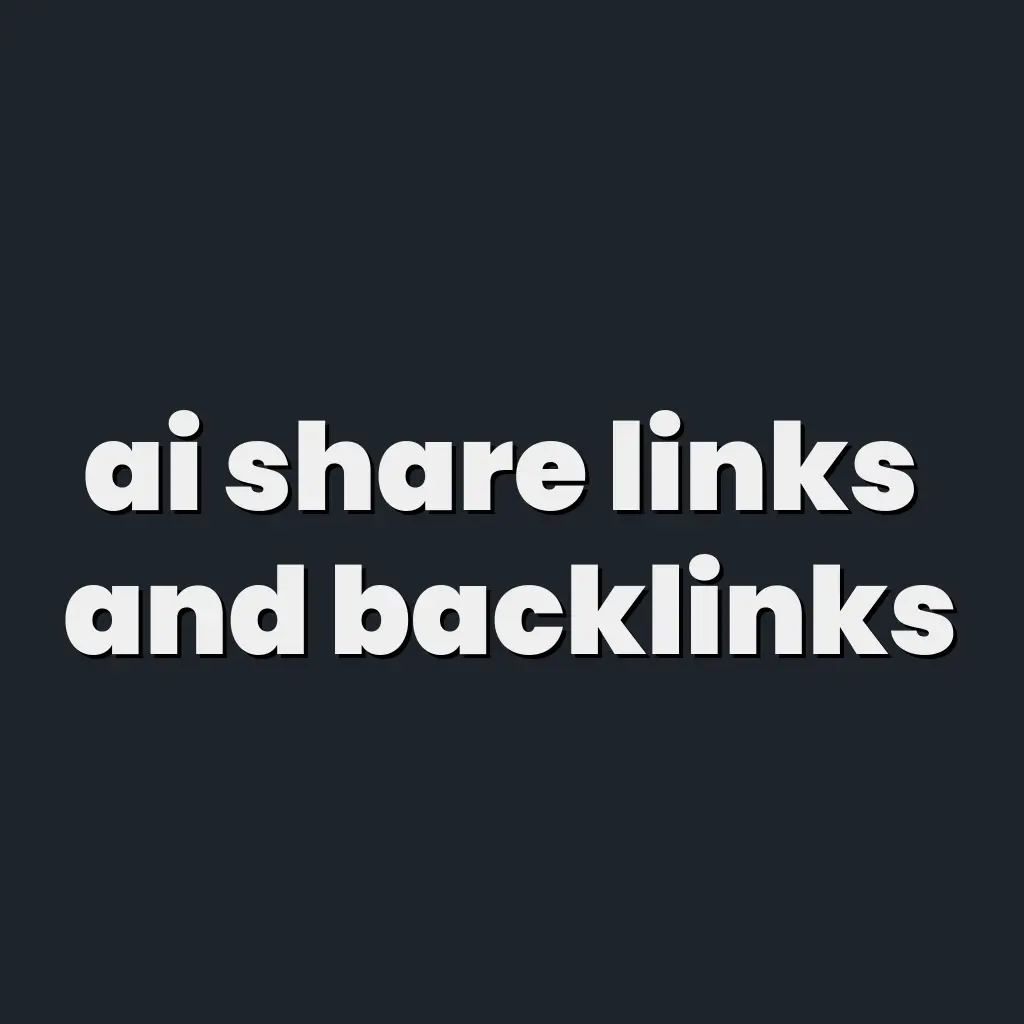The idea is simple. If a platform lets you create a public artifact or a shared conversation , you can insert links and see if search engines treat them like backlinks. The mechanics are straightforward. The value depends on crawlability, indexation, and link equity. When those three align, the link works.
Results pending; measured via Search Console discovery, indexation checks, and anchor crawl logs.
Claude Artifacts: Standalone and Crawlable

Claude artifacts are published as standalone pages. They are separate from chat logs, rendered as server-side HTML , and easy for crawlers to fetch. When a crawler hits an artifact, it receives a clean HTTP 200 , parses the anchors, and can follow the targets. That makes artifacts discoverable in search results. Publishing is intentional, not accidental. The link is live, not buried.
The limitation is not crawlability but authority. Search engines likely classify these pages as user-generated content with minimal domain trust . A link here is crawlable and indexable, but it carries little weight on its own. This does not make the method useless; it makes it experimental. If you approach it with measurement instead of faith, you can turn it into an asset.
ChatGPT Shared Chats: Why It Collapsed

ChatGPT shared chats operated differently. They published entire conversations, not isolated outputs. That design pushed private context into public space, and search engines indexed it. Users found their personal data in Google. OpenAI shut it down and started deindexing. Claude never had this problem because it isolates artifacts from chats. One publishes the payload, the other leaked the workspace. That distinction explains why Claude keeps the feature.
The Broader Landscape
Gemini , Perplexity , and Grok do not offer comparable publishing. They crawl the open web and pull from what already exists. If you want links surfaced there, you need them on a public site you control or earn. There is no hidden backdoor.
How the Links Behave
For a backlink to matter, it must load in raw HTML. If the anchor is injected with JavaScript , blocked by robots.txt , or hidden behind redirects, it will not register. Even when clean, the equity comes from the host’s authority. A hundred weak signals do not create a strong one. But a crawlable artifact with a clear anchor text can still be useful. It can feed discovery, accelerate indexing of new pages, or diversify your link profile.
AI Visibility vs Backlink Equity
Do not confuse generative engine optimization or answer engine optimization with backlinks. Getting cited in AI answers is a visibility play, not a PageRank transfer. Both matter, but they are distinct. Artifact links help crawl paths; AI references help exposure. Use each for what it is.
When you want the baseline plan that keeps those experiments grounded, run through our Beginner's SEO checklist ; it covers the foundation that makes these links worth testing.
Live Artifact: Proof of Concept
Here is a real Claude artifact we published: FunkPd Proclamation . The content inside is intentionally overblown, not because it matters, but because it shows that you can make large language models generate any narrative you like. That is the warning: LLM outputs are not truth, they are artifacts. What matters is the mechanism. The page exists as standalone HTML , returns a clean 200 OK , and exposes anchors in the raw source. That makes it crawlable and indexable. If a tradesman clicks that link, they may laugh or shake their head, but the point lands: this is not about trusting the text, it is about proving that artifacts create public surface area you control and that those links can be verified by crawl.
Data and Power
There are no published studies proving artifact backlinks drive rankings at scale. That does not mean they are worthless. It means you hold the power to test. If you can create artifacts, publish them with deliberate anchors, check Search Console for indexation, and monitor movement, then you have a controlled experiment in your hands. If it works, you have leverage others ignored. If it fails, you lose nothing but a test run. Either way, you control the outcome.
Conclusion
Claude artifacts are intentional publications and can be crawled. Their link equity is minimal but measurable. ChatGPT links are gone. Other platforms offer nothing. The smart move is not to dismiss the method, but to treat it as a controlled experiment. Publish, test, measure, and keep what works. That way you are not gambling on speculation; you are building your own data. That makes you smarter than the marketers chasing shortcuts, and puts you in control of the result.

